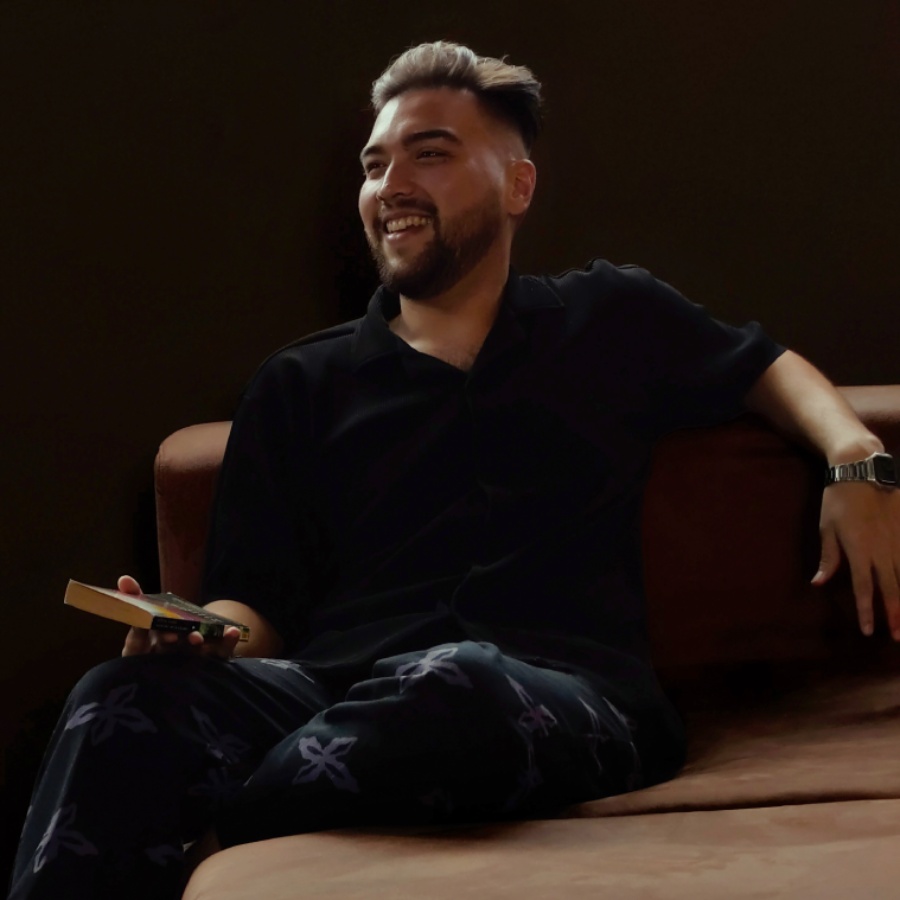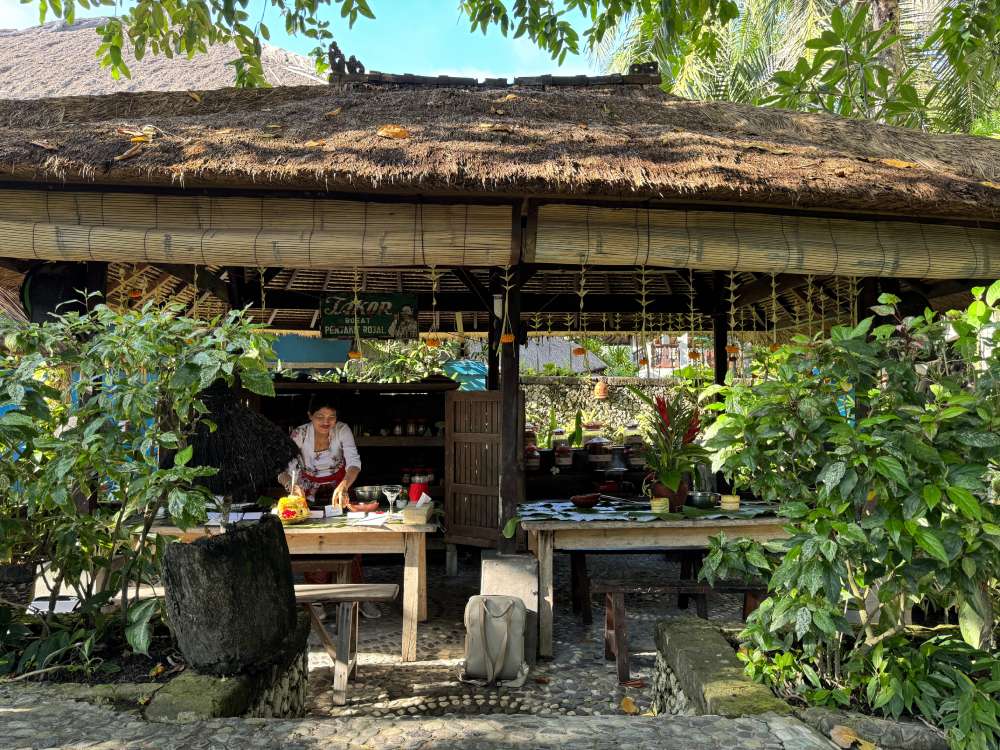
Start the New Year with a commitment to revitalisation and well-being by adding a new skill to your repertoire. Explore the ancient art of jamu, a centuries-old traditional Indonesian elixir that continues to exist to this day. Dive into the secrets of these time-honoured health concoctions, crafted from a combination of herbs and spices used to promote healing, overall health and rejuvenation.
Immerse yourself in the Djamoe Herbal Class offered at the charming Hotel Tugu Bali, a journey into the traditional methods of preparing and making these ancient potions. Originating from the island of Java, this art of herbal healing has evolved throughout the years and has been passed down through generations. The traditional jamu consists of potent mixtures made from leaves, roots, flowers, seeds, and barks of significant trees.
While jamu — spelt ‘djamoe’ in olden-day Indonesian — was once the preferred choice in Indonesian households, it gradually faded with the introduction of Western medicines. However, with the current growing popularity of organic and all-natural healing preferences, jamu has begun to make a triumphant comeback.
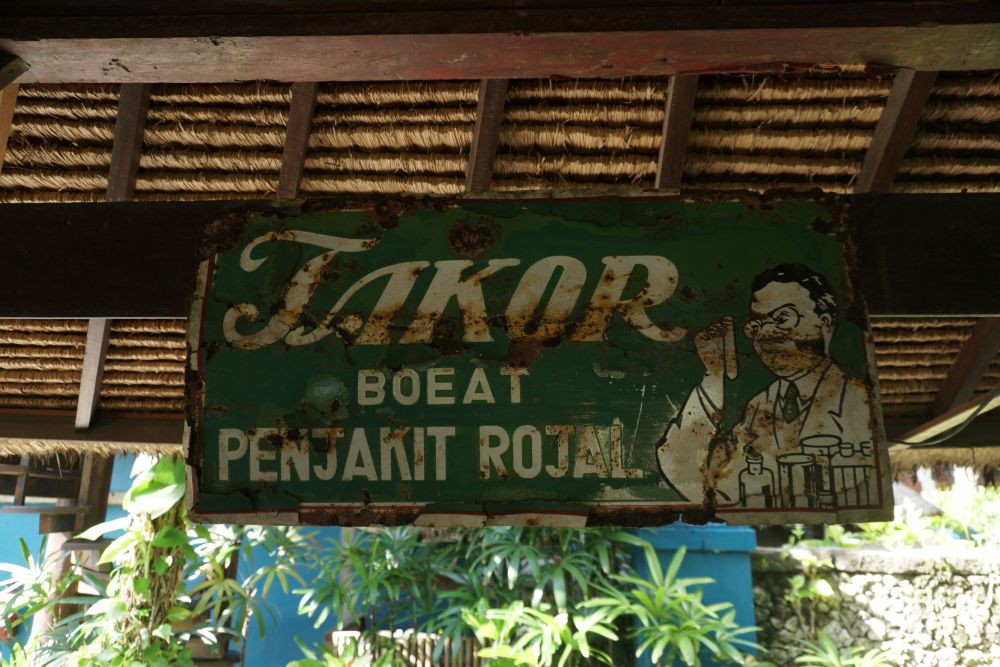
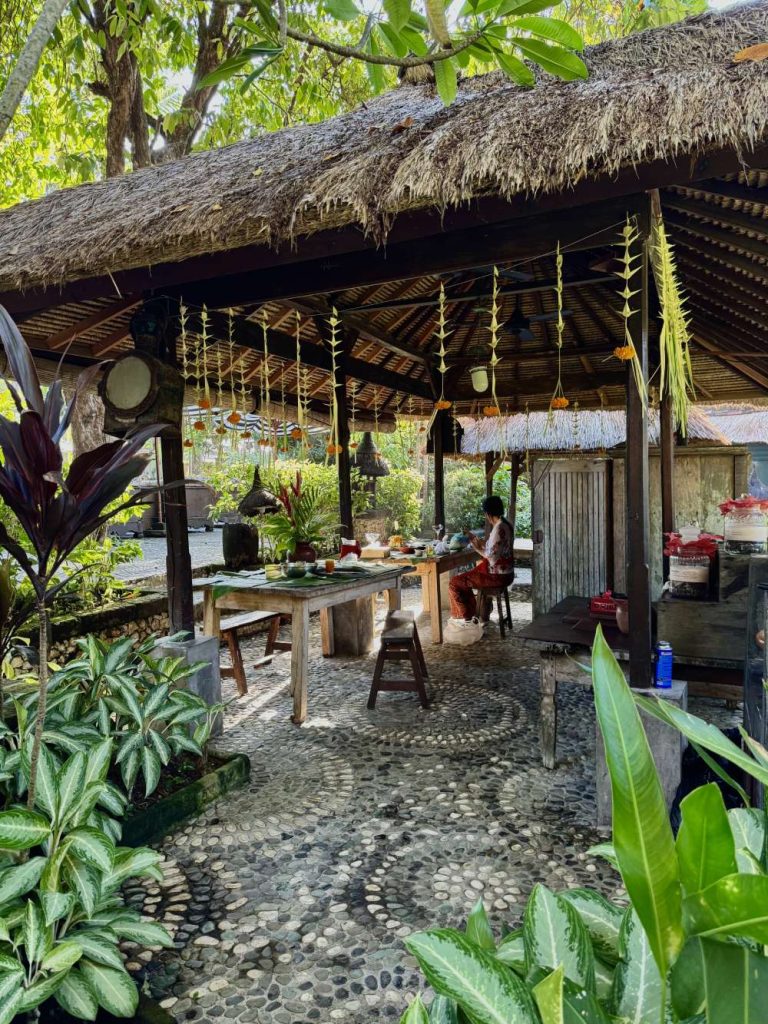
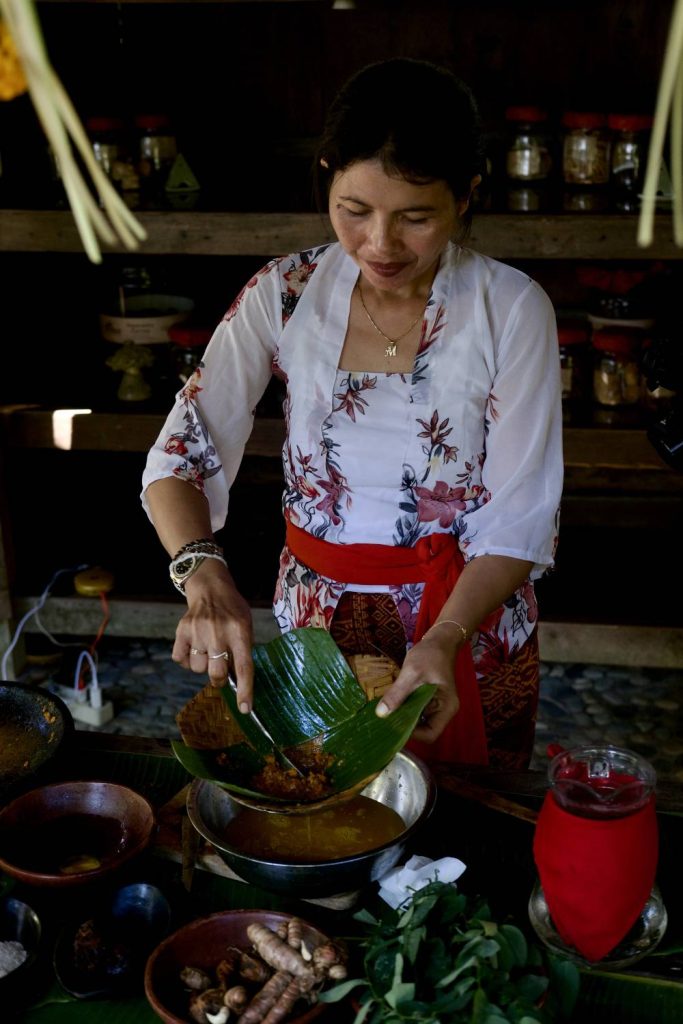
The Djamoe Herbal Class at Hotel Tugu Bali offers an in-depth exploration of various jamu types, each with unique properties and benefits. Ideal for those who seek homemade remedies to alleviate ailments and boost immunity, this class equips you with the knowledge and skills to create your own jamu at home.
Set in an authentic and mildly dramatised Javanese kitchen, the class provides a glimpse into a bygone era when kitchens and backyards also served as pharmacies. Distinguished by the use of herbs in Javanese jamu and leaves in Balinese variants, the class lets you choose four djamoe recipes to learn out of eleven varieties offered, including Djamoe Mengkudu, Djamoe Beras Kencur, Djamoe Kunir Asem, and more.
Led by the in-house jamu expert, Ibu Kadek, the class unfolds in the atmospheric Javanese kitchen, complete with wooden tables and benches. The ingredients, laid out on the table on woven plates covered with banana leaves, await your exploration.
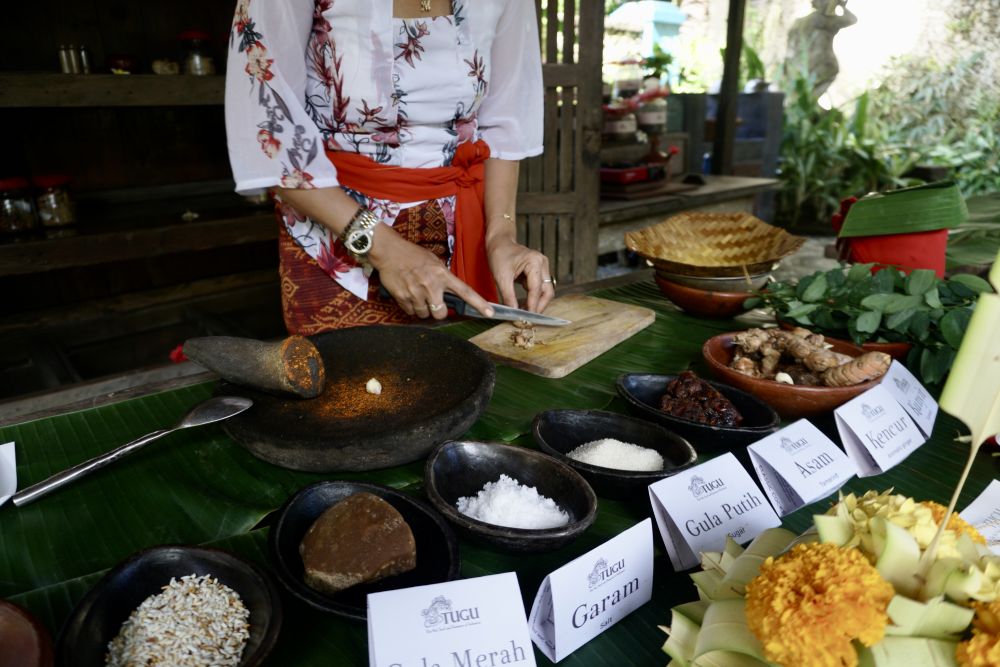
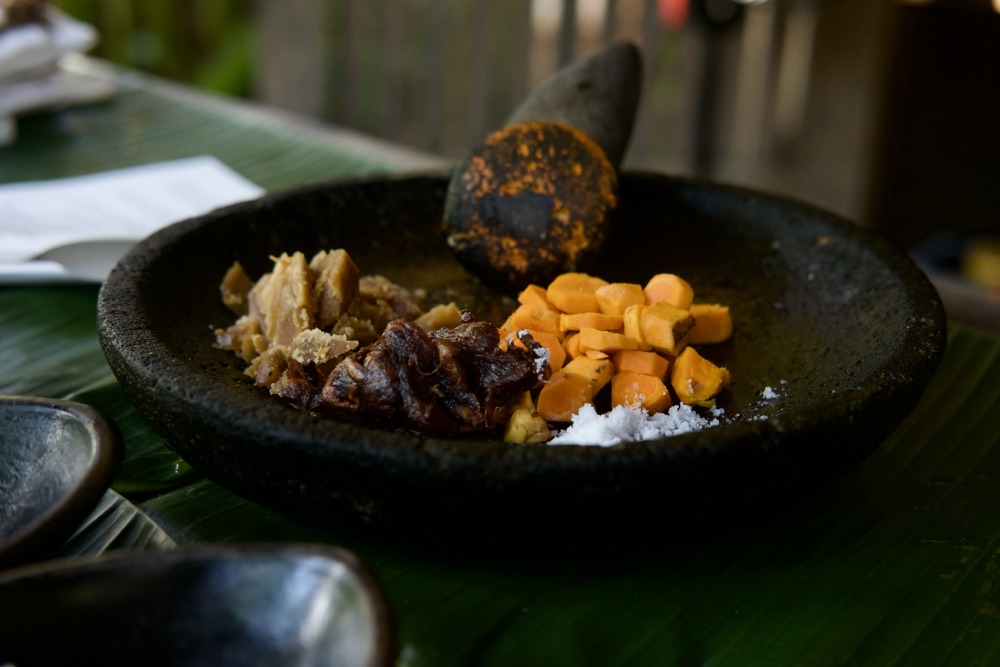
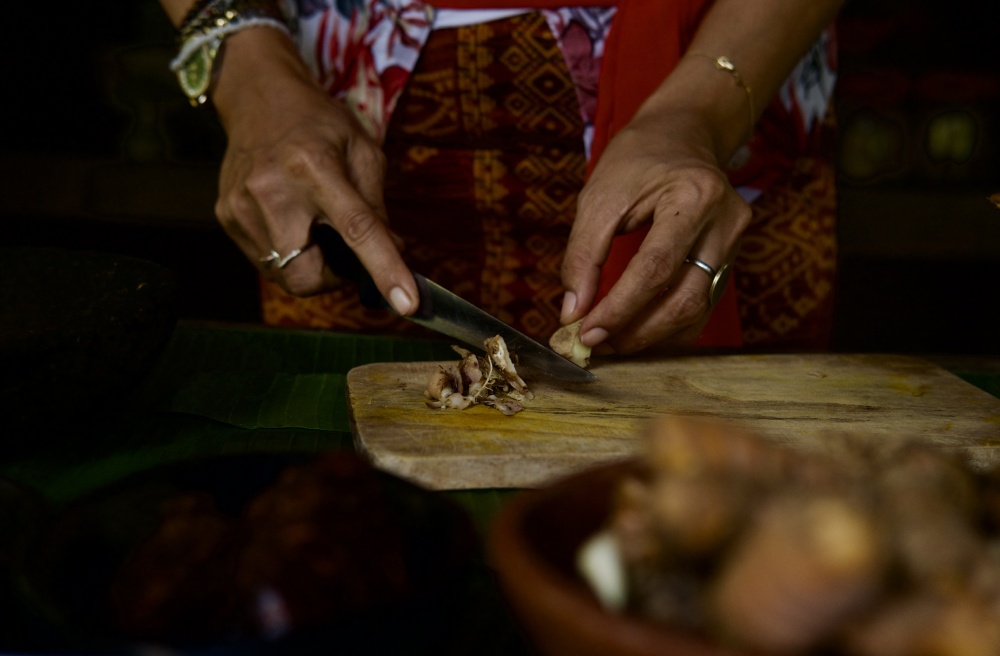
Discover the preparation techniques for four popular djamoe: Djamoe Beras Kencur, Djamoe Kunir ASem, Djamoe Kuat Lelaki, and Djamoe Daun Kayu Manis. Ingredients required for these djamoe include telur kampung (organic eggs), jeruk nipis (lime), beras (uncooked rice), gula merah (palm sugar), gula (regular sugar), garam (salt), asam (tamarind), kencur (aromatic ginger), kunyit (turmeric), and daun kayu manis (cinnamon leaves).
A majority of the jamu requires two very important tools: mortar and pestle, needed to grind the ingredients finely, while others merely require your bare hands. If you’re unfamiliar with using a mortar and pestle, that’s where Ibu Kadek steps in to demonstrate and guide you on the correct method to utilise it effectively. Once you’ve combined all the crushed ingredients, all that is left to do is add water to the mixture, strain it and heat it in a pan until it boils, et voilà! Your jamu is ready to drink.
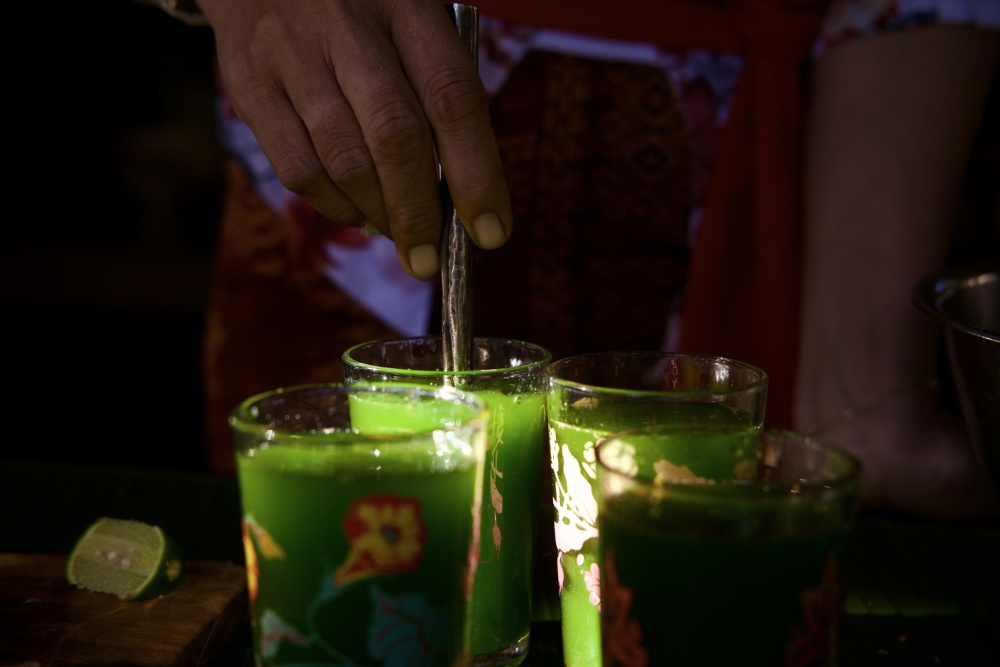
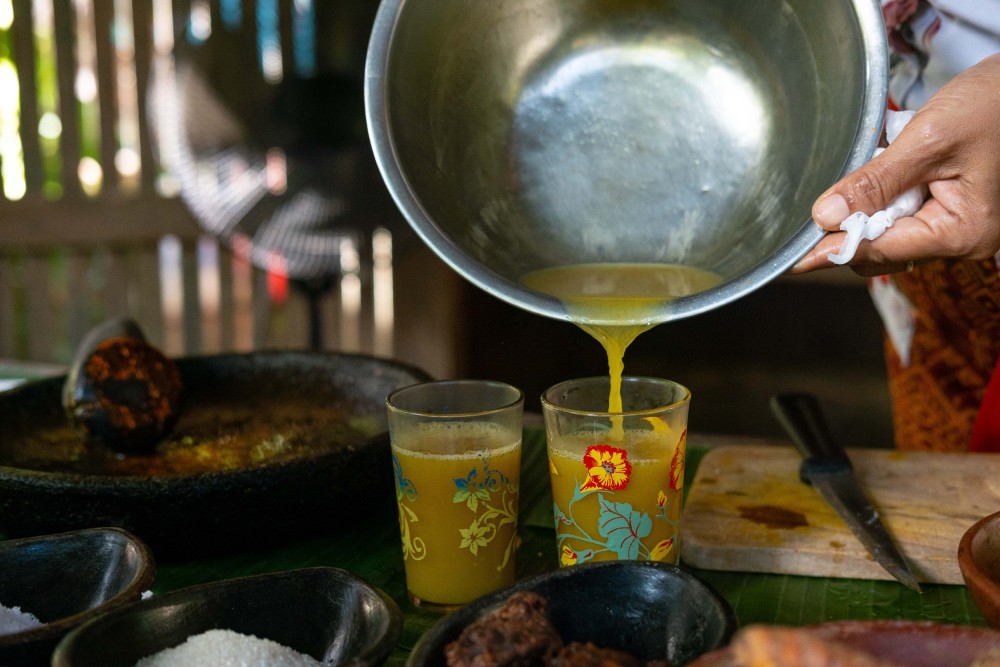
Each jamu boasts unique benefits: Djamoe Beras Kencur alleviates muscle aches and light colds, promoting strength and well-being; Djamoe Kunir Asem, favoured by women, regulates menstruation and feminine hormones while acting as a stomach antiseptic and smoothen the skin; Djamoe Kuat Lelaki enhances stamina and energy for men; whilst Djamoe Daun Kayu Manis is renowned for eliminating spruce, mouth ulcers and refreshing the body.
Discover the wisdom of these traditional health elixirs and embark on a journey to revive age-old traditions and foster well-being in the embrace of nature’s remedies.
Priced at IDR 330,000++ per person with a minimum of 2 persons, the Djamoe Herbal Class is available by reservation, requiring a minimum one-day booking in advance.
To book a session, contact +62 813 3702 0904 or email bali@tuguhotels.com
Hotel Tugu Bali
Jl. Pantai Batu Bolong, Canggu
+62 813 3702 0904
bali@tuguhotels.com
tuguhotels.com

